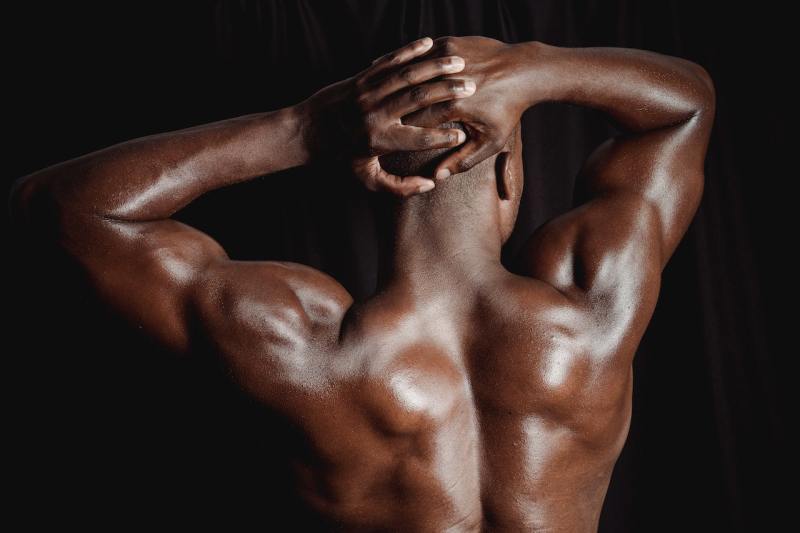Back extension machines are a crucial piece of gym equipment. They’re straightforward to use, and they work not just your back but also your glutes and abs. In this article, we’ll tell you everything you need to know about back extensions, from how to use a back extension machine to what muscles they work and even whether you need one at all.
What muscles does the back extension machine work?

Back extensions target the posterior chain, which are all the muscles down the back of your body. This means from your latissimus dorsi (back muscle right under your shoulders) and erector spinae (lower back muscles) down to your glutes and hamstrings. Back extensions get your core, too. Most of the workout is concentrated in your erector spinae, though, and the other areas are less affected.
How often should you use a back extension machine to see results?

That depends on your overall workout routine. If you have a push day and a pull day, back extensions are part of a pull day. If you divide your workouts by area — arm day, leg day, core day — do back extensions whenever you do other back workouts, and if you don’t have a special “back day,” do them on core day or leg day.
If you don’t use any type of system, a general guideline is to avoid doing the same type of exercise two days in a row. To see results, you should probably do back extensions at least once a week. Anywhere between one and three times a week will be effective.
Should you use heavy weights on the back extension machine?

For most people, especially beginners, body weight is more than enough. If you’re experienced with the back extension machine, you may want to try adding weight, but add small amounts at first and increase it slowly.
Remember when you learned about levers in elementary school? The further away you put weight from a pivot point, the more force it has. When you’re doing back extensions, your body is the lever, and your hips are the pivot point. Weight added at your arms or chest, near the top of your body, will add more difficulty than you expect.
Is the back extension machine safe for everyone?

Back extensions are a difficult motion, and people with lower back injuries might aggravate them. However, certain types of extension-based exercises have been shown to reduce back pain, so if you do extensions carefully, they may improve and not worsen injuries. It’s very important to use proper form. Don’t arch your back, and keep the motion smooth — don’t jerk! For beginners, it’s best to start with “Superman” back extensions on the floor to reduce the risk of injury.
What to look for in a back extension machine

A back extension machine needs to be very stable. In a back extension, your body is held fairly high off the ground, and any instability in the machine could be dangerous. Even a slight bit of wobbling could lead to injuries.
Adjustability is also important, especially the ability to adjust the distance between the hip rest and the footrest to match your leg length. You should also look for a machine that’s clean and in good condition, of course, and one that’s the right height for you (or the height can be adjusted).
With all that said, sometimes the best back extension machine is the one you have. If you love your gym, and every part of it is great except the back extension machine, you don’t need to find a second gym with a better back extension machine. Sometimes, it makes sense to accept a machine that isn’t as adjustable as you’d like or isn’t set up quite right for you. If it’s wobbly, though, it’s better to just do a machine-free variation.
What at-home variation can you do?

There are a few variations you can easily do at home without a machine. The most common variation of back extensions is the Superman back extension. To do this version, lie face down on the floor and then lift your torso and arms up off the floor. You can also try bird dogs and glute bridges, which aren’t exactly variations of back extensions, but they work the same muscle groups.
If you have an exercise ball or medicine ball, you can also try an exercise ball back extension: Lay on the ball face down, with your hips or core in the middle, and raise yourself with your back. You should only do this variation if you have experience with a back extension machine. The need to balance adds more difficulty, and it could increase your risk of injury.
Frequently asked questions

Is the back extension machine effective?
An extension machine is the easiest way to perform back extensions, which are often a highly effective exercise. Using a back extension machine can be a very effective part of a workout.
Do back extensions grow glutes?
Back extensions target the back more than the glutes, but they do work out your glutes as well. If your goal is to build your glutes, there are plenty of great glute exercises you should try, but back extensions can definitely be part of your process.
Do back extensions help with back fat?
It’s not possible to target fat in only one area. No matter what muscles you work out, you’ll burn fat all throughout your body. However, back extensions can help you gain a more defined back with clearer muscle definition, which still ultimately results in a better appearance.




